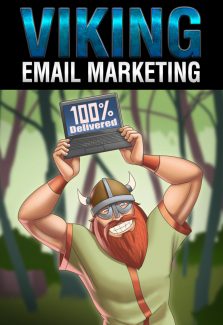
 License Type: Private Label Rights
License Type: Private Label Rights  File Type: ZIP
File Type: ZIP
 SKU: 61830
SKU: 61830  Shipping: Online Download
Shipping: Online Download
Sample Content Preview
Chapter 1:
Intro to Email Marketing
What is Email Marketing?
Email marketing, at it’s core, is pretty straight forward. It’s the use of email messages sent to a list of subscribers to advertise or promote brands, products, offers, events, or pretty much anything you want. Now that “core” definition of email marketing may be simple, but email marketing has come a long way in recent years and there’s actually quite a bit more to it than that, today. We’ll be discussing those advances later in this guide, but first, let’s go over WHY you need email marketing in your business.
Why Email Marketing?
The need for email marketing is one of those things you just can’t argue with because the numbers are just too clear and astounding to ignore. According to a report by DMA, the average return on investment (ROI) for email marketing these days is $38 for every $1 spent. And 80% of business professionals report growth in customer acquisition and retention resulting from email marketing. There’s nothing else like it. Not even social media comes close. Leads are twice as likely to opt-in to your email list than they are to engage with your business on Facebook. And if you thought social media and search engines were the key to growing your business,
think again. Email conversion rates are higher than both search and social combined!
This should come as no surprise, really. Consumers have repeatedly insisted that they LIKE getting promotional messages via email. Over 70% of consumers say email is their preferred channel for business communication and 60% even say they want to receive your marketing emails weekly or MORE often. So, in light of all the recent trends and data, there’s really no questioning the critical importance of email marketing in your business. If you’re not using email marketing in your business, it’s time to start, right now. The only question is where to start.
Where to start Email Marketing.
So, as you’ve probably guessed, robust email marketing operations can’t exactly be run from your personal email account. You need an actual email marketing platform, commonly called an “autoresponder” service. These platforms can handle a wide range of email marketing processes from basic things like initial autoresponder sequences and weekly newsletter scheduling to more advanced stuff like automation workflows (which we’ll discuss later).
Popular platforms that can handle most of these functions include:
GetResponse
Aweber
ActiveCampaign
ConstantContact
iContact
CampaignMonitor
MailChimp
SendReach
ConvertKit
SendLane
SendGrid
VerticalResponse
MarketHero
InfusionSoft
Ontraport
As you can see, there are a ton of email marketing platforms out there for you to choose from. You should dedicate a day
or two to researching each one, comparing features and pricing, and determine which one is best for your business. Once you’ve chosen an autoresponder service, it’s time to start thinking about email marketing strategies.
Chapter 2: Email Marketing Strategies
There are a number of ways to leverage email marketing for your business. These range from super basic to super advanced and everything in between. Let’s start by differentiating between the two main types of email marketing messages.
Newsletters
Newsletters are one of the oldest types of marketing models. Both in the case of print mail and email. Basically, you send out broadcasts to your list in “real-time” to notify them of offers, promotions, events, and any kind of updates. By “real-time” we mean specific dates on a calendar, rather than “X” number of days after subscribing. Newsletters are great because they provide a lot of flexibility, can be planned well in advance, and allow you to adjust your marketing and customer relationships “on the fly” based on what’s going on in your industry at any given moment. Also, their “real-time” nature means everyone on your list is on the same page at any given time, which is great for moving large amounts of traffic at one time.







